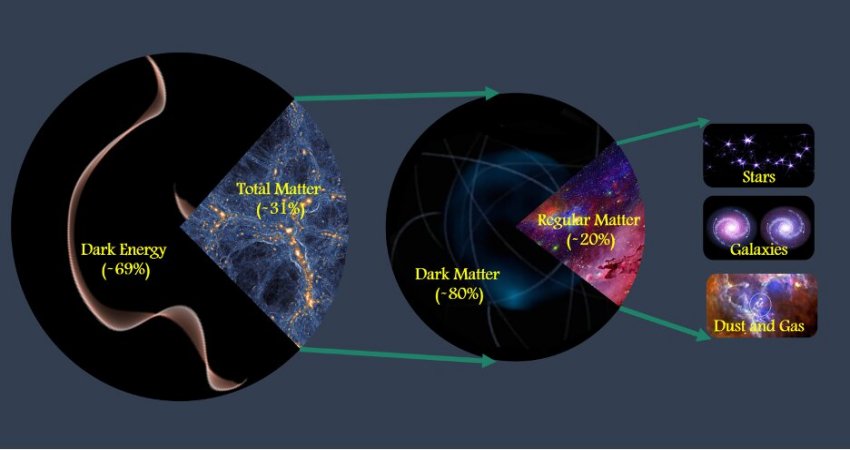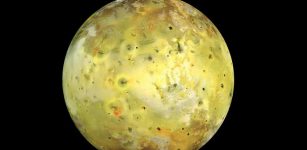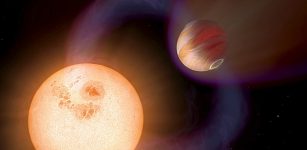Moon: Are Dark, Polar Craters Perfect Environments For Long Preserving Of Water?
Eddie Gonzales Jr. – MessageToEagle.com – The Moon’s south pole region is home to some of the most extreme environments in the solar system.
The coldest temperatures in the solar system inside these craters – measured ny NASA’s Lunar Reconnaissance Orbiter (LRO) – have become known as perfect environments for preserving material like water for eons.
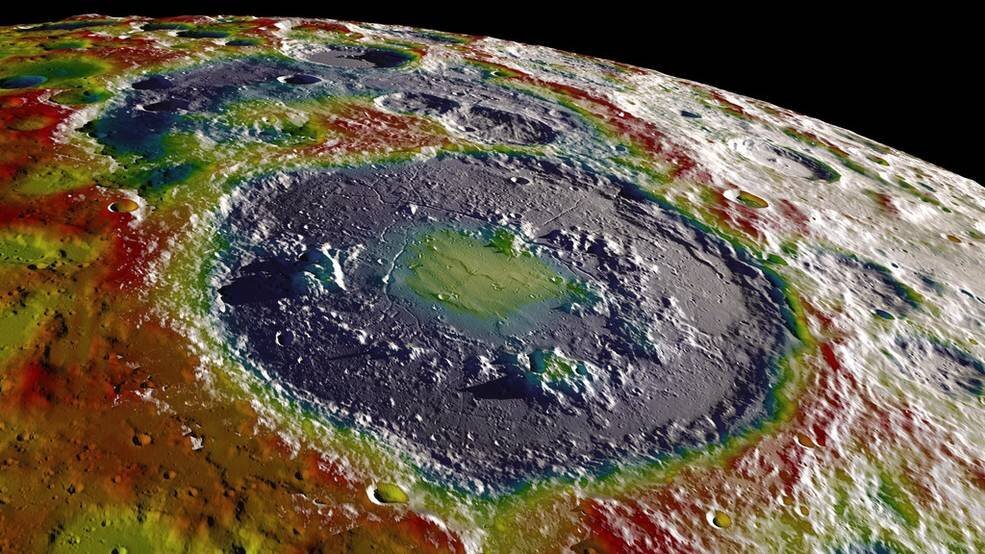 A high-resolution free-air gravity map based on data returned from NASA’s Gravity Recovery and Interior Laboratory mission, overlaid on terrain based on NASA’s Lunar Reconnaissance Orbiter altimeter and camera data. The view is south-up, with the south pole near the horizon in the upper left. The terminator crosses the eastern rim of the Schrödinger basin. Gravity is painted onto the areas that are in or near the night side. Red corresponds to mass excesses and blue to mass deficits. Credits: NASA’s Scientific Visualization Studio
A high-resolution free-air gravity map based on data returned from NASA’s Gravity Recovery and Interior Laboratory mission, overlaid on terrain based on NASA’s Lunar Reconnaissance Orbiter altimeter and camera data. The view is south-up, with the south pole near the horizon in the upper left. The terminator crosses the eastern rim of the Schrödinger basin. Gravity is painted onto the areas that are in or near the night side. Red corresponds to mass excesses and blue to mass deficits. Credits: NASA’s Scientific Visualization Studio
It turns out however, that despite temperature that dips to -388 degrees Fahrenheit (-233 Celsius) and can presumably keep frost locked in soil virtually forever, water is slowly escaping the topmost, super thin layer (thinner than the width of a red blood cell) of the Moon’s surface, according to a new study of NASA scientists.
“People think of some areas in these polar craters as trapping water and that’s it,” William M. Farrell, a plasma physicist at NASA’s Goddard Space Flight Center in Greenbelt, Maryland, who led the lunar frost research, said in a press release.
“But there are solar wind particles and meteoroids hitting the surface, and they can drive reactions that typically occur at warmer surface temperatures. That’s something that’s not been emphasized.”
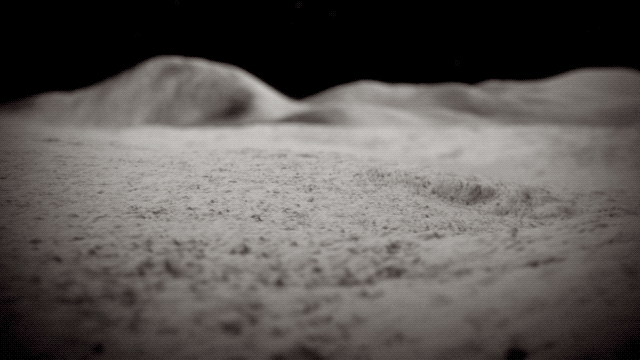 Streams of meteoroids striking the Moon’s surface. Credits: NASA’s Goddard Space Flight Center
Streams of meteoroids striking the Moon’s surface. Credits: NASA’s Goddard Space Flight Center
Unlike Earth, with its plush atmosphere, the Moon has no atmosphere to protect its surface. So when the Sun sprays charged particles known as the solar wind into the solar system, some of them bombard the Moon’s surface and kick up water molecules that bounce around to new locations.
“So every time you have one of these impacts, a very thin layer of ice grains is spread across the surface, exposed to the heat of the Sun and to the space environment, and eventually sublimated or lost to other environmental processes,” said Dana Hurley, a planetary scientist at the Johns Hopkins University Applied Physics Laboratory in Laurel, Maryland.
While it’s important to consider that even in the shadowed craters water is slowly seeping out, it’s possible that water is being added, too, the paper authors note. Icy comets that crash into the Moon, plus the solar wind, could be replenishing it as part of a global water cycle; that’s something scientists are trying to figure out. Additionally, it’s not clear how much water there is. Is it sitting only in the top layer of the Moon’s surface or does it extend deep into the Moon’s crust, scientists wonder?
Either way, the topmost layer of polar crater floors is getting reworked over thousands of years, according to calculations by Farrell, Hurley, and their team. Therefore, the faint patches of frost that scientists have detected at the poles using instruments such as LRO’s Lyman Alpha Mapping Project (LAMP) instrument could be just 2,000 years old, instead of millions or billions of years old as some might expect, Farrell’s team estimated.
“We can’t think of these craters as icy dead spots,” he noted.
To confirm his team’s calculations, Farrell said, a future instrument capable of detecting water vapor should find, above the Moon’s surface, one to 10 water molecules per cubic centimeter that have been liberated by impacts.
For forthcoming science and exploration, the scattering of water particles could be great news. It means astronauts may need not to subject themselves and their instruments to the harsh environment of shadowed crater floors in order to find water-rich soil — they could just find it in sunny regions nearby.
This research is telling us that meteoroids are doing some of the work for us and transporting material from the coldest places to some of the boundary regions where astronauts can access it with a solar-powered rover,” Hurley said.
“It’s also telling us that what we need to do is get on the surface of one of these regions and get some firsthand data about what’s happening.”
Read more – here
Written by Eddie Gonzales Jr. – MessageToEagle.com Staff




